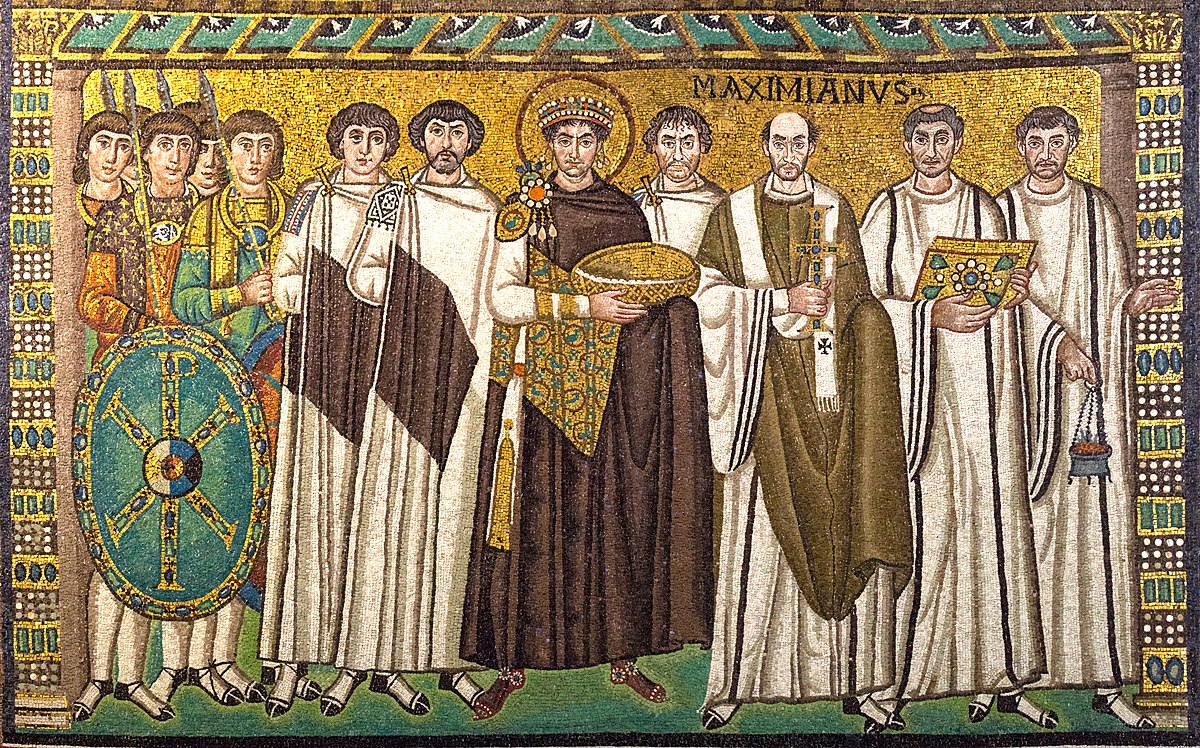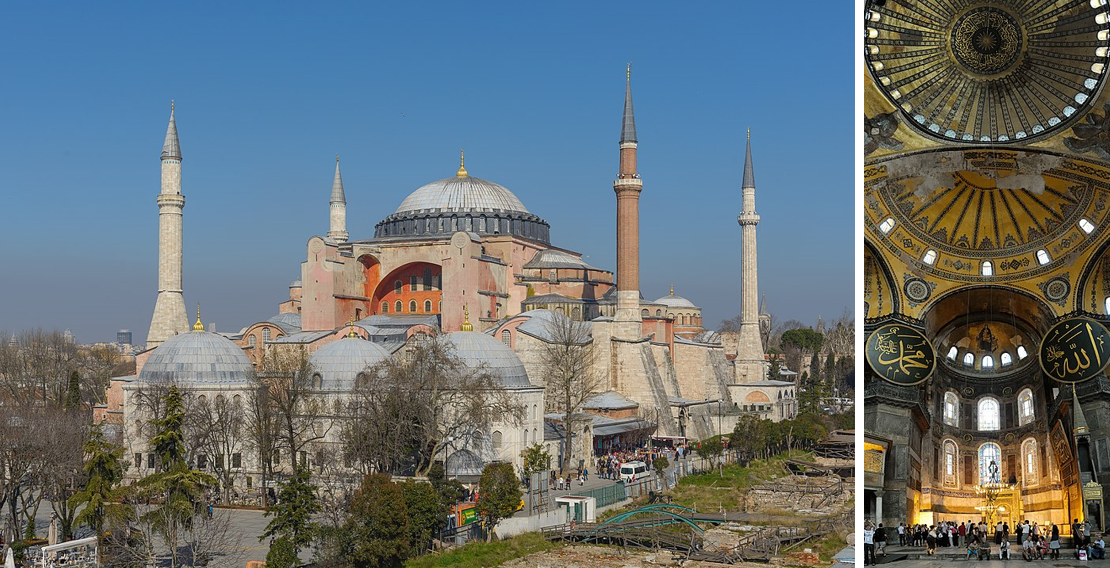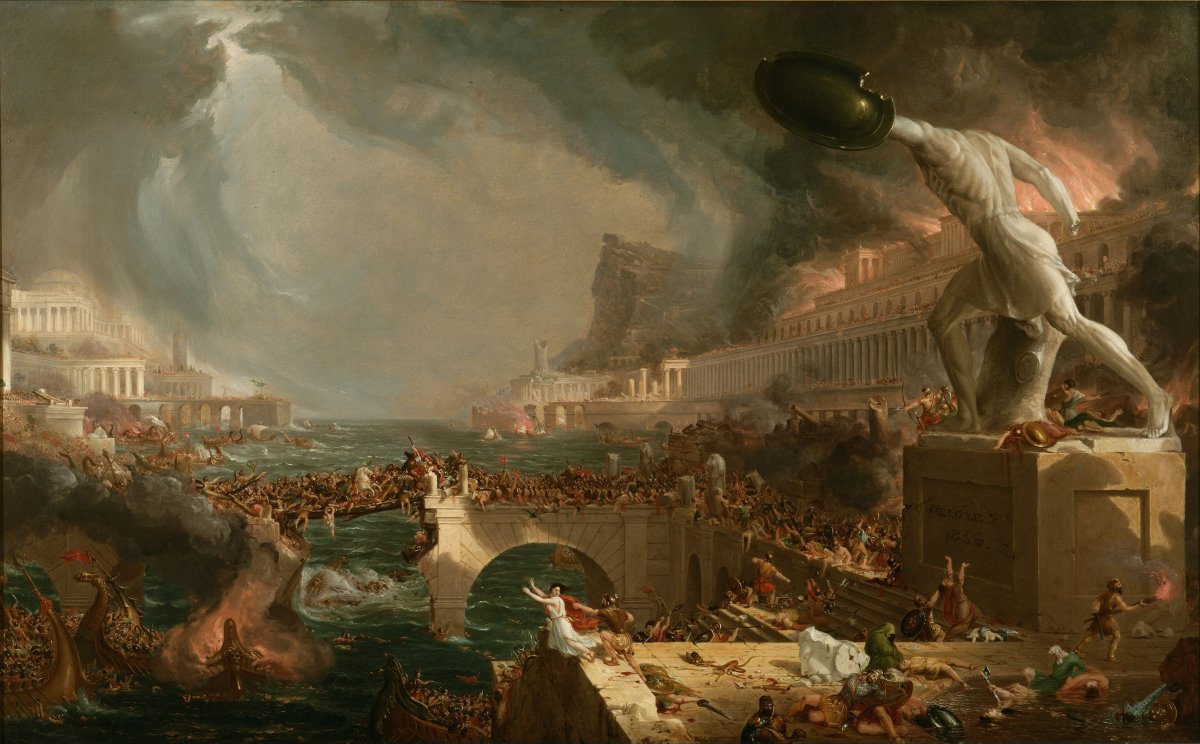The “Justinianic Plague” is the popular name for a pandemic of bubonic plague in the Late Roman or Byzantine Empire, which first appears in our sources in 541 CE. The pandemic reappeared in waves in different regions over the next two hundred years, ending ca. 750 CE.
We call it the “Justinianic” plague because the first outbreak corresponds with the reign of the Emperor Justinian (r. 526-565 CE). Justinian, who resided in the imperial capital of Constantinople, was himself reportedly a casualty of the disease, although he did not die from it.

Because there have been multiple pandemics of bubonic plague in history, scholars sometimes refer to the Justinianic Plague as the “First Plague Pandemic” so as to distinguish it from the “Second Plague Pandemic” in the fourteenth century (also known as the “Black Death”) and the “Third Plague Pandemic” in the nineteenth century.
Scholars still debate precisely where the Justinianic Plague originated. Our literary sources place its origins in Africa, but other evidence suggests that it likely came from Central Asia.
In fact, bubonic plague is an extremely old disease, and scientists have detected the DNA of the pathogen that causes it—the bacterium Yersinia pestis—in the remains of late Neolithic-era humans (4500-2000 BCE).
We know that the plague first hit cities in the southeastern Mediterranean, and moved swiftly through the Levant to the imperial capital of Constantinople, where it was first reported in 541 CE. From there, it spread westward through regions of the former Roman Empire, reaching as far north as Germany and Britain.

Map of Byzantine Empire ca 550. The green indicates the conquests during Justinian's reign.
In the past, scholars thought that rats were the primary “vectors” of the disease—meaning that they were the animals that carried the fleas, which act as hosts to the bacteria, which in turn infected humans. However, we now think that humans, who can also carry fleas and lice, spread the disease to each other directly rather than rats.
We are fortunate to have several eyewitness accounts of the Justinianic Plague, including two highly detailed descriptions of the disease, which also depict the plague’s social and economic impact on the infected community.
Our best historical source is Procopius of Caesarea (in modern Israel), a high official in the Roman government, who lived in Constantinople during the first wave of plague from 542-543 CE. Procopius offers many insights into the plague’s causes and symptoms, describing the telltale buboes, or swollen lymph nodes, as well as its extensive death toll and its social and psychological impact.
Another great plague source is John of Ephesus (in modern Turkey), a Christian bishop living in Syria who lived at the same time as Procopius. He wrote about the plague in Palestine and Syria, and his narrative aligns with Procopius’ account in interesting ways; it’s clear that they are both discussing the same disease.

Justinian's famous church (exterior left; interior right), the Hagia Sophia, was completed in 532 CE, nearly a decade before the first outbreak of the plague in Constantinople. The city was a major epicenter of the pandemic and many citizens were directly impacted, including Justinian himself.
In their writings, Procopius and John of Ephesus describe the plague in lurid detail, from the disease’s physical symptoms (fever, chills, disorientation, swollen and in some cases, oozing buboes) to its disruptive impact on the rhythms of daily life.
We learn, for instance, that the number of dead from the disease quickly outpaced families’ capacity to bury their loved ones properly. Strikingly, both witnesses report that the situation became so dire in Constantinople that Justinian’s government had to direct the removal of bodies from the city and their mass burial outside the walls.
While today we are accustomed to the state assisting the public during emergencies, especially with the handling of bodies and burials, Justinian’s intervention in the care of the dead was unprecedented.
For many centuries, historians could only speculate that the disease that sickened Justinian and caused so much suffering in Constantinople and Syria was truly bubonic plague. Scientists, however, have helped historians answer this question by developing techniques for extracting and analyzing DNA samples from ancient human remains.
Thanks to the recent work of palaeogeneticists, who were able to isolate and identify the aDNA of Y. pestis from the dental pulp of 6th, 7th, and 8th century human teeth, we now know definitely that bubonic plague circulated around the Byzantine and former western Roman Empire at this time.
Bubonic plague is a bacterial infection, which today doctors cure relatively easily with antibiotics. However, without such modern treatments, the Justinianic Plague sickened and killed large numbers of people, with somewhere between a 60-80% mortality rate for infected individuals.

This means that, while the death rate for the disease was extremely high (far higher than COVID-19), not everyone who contracted plague died. Justinian himself caught the disease and survived.
However, like all pre-modern diseases, the single most important risk factor in contracting the disease was geography. A wealthy person, even an emperor, who lived in a densely populated city like Constantinople was far more likely to catch plague than a poor peasant living on an isolated farm.
For a very long time, historians thought that the Justinianic Plague, along with barbarian invasions (as depicted in the image below), contributed directly to the so-called “Fall of the Roman Empire.”

Thomas Cole, “The Course of Empire Destruction” (1836).
They argued that the plague was a global, catastrophic event, which killed millions of inhabitants, paralyzed the economy, stymied urban development, destabilized the military, and generally brought about the end of Antiquity and the start of what used to be called “the Dark Ages.”
Historians believed that the plague had this totalizing impact because our key eyewitness sources tell this story about the plague. For them, the pain and suffering that the plague clearly caused in their local communities could only be narrated in apocalyptic terms. In fact, John of Ephesus, a pious Christian bishop, argued that the plague was divine punishment for man’s many sins.
Recently, however, a team of scholars has largely debunked this popular narrative. Several new studies, which examine a range of textual and physical indicators for phenomena like economic production, state activity, urban development, and military strength, have demonstrated that the Justinianic Plague was in reality a largely localized disease event that, while clearly impacting Constantinople and a few other cities severely, had a more limited effect on other, smaller communities.
For example, a study of fossilized pollen remains—an excellent indicator of agricultural production and hence ancient economic activity—shows clearly that there was no marked decline in farming in the eastern Mediterranean during the years immediately following the plague’s outbreak.
In short, while the plague certainly caused extraordinary pain and suffering for individuals in the impacted cities, it did not cause the end of Rome.
Want to Learn More?
Ancient Literary Sources and DNA evidence:
Readers can read Procopius’ account of the plague in Constantinople here:
https://sourcebooks.fordham.edu/source/542procopius-plague.asp
Marcel Keller, Maria Spyrou, et al. “Ancient Yersinia pestis genomes from across Western Europe reveal early diversification during the First Pandemic (541-750),” Proceedings of the National Academy of Sciences 116 (25), June 19, 2019. https://www.pnas.org/content/pnas/116/25/12363.full.pdf
Traditional, “Catastrophist” Accounts of the Justinianic Plague:
Kyle Harper, The Fate of Rome: Climate, Disease, and the End of an Empire (Princeton: Princeton University Press, 2017).
Lester Little (ed.), Plague and the End of Antiquity (Cambridge: Cambridge University Press, 2007).
Mischa Meier, “The ‘Justinianic Plague’: the economic consequences of the pandemic in the eastern Roman Empire and its cultural and religious effects,” Early Medieval Europe 24.3 (2016): 267-292.
Revisionist Accounts of the Justinianic Plague:
Lee Mordechai, Mere Eisenberg, et al. “The Justinianic Plague: An Inconsequential Pandemic?,” Proceedings of the National Academy of Sciences 116 (51), December 19, 2019. https://www.pnas.org/content/pnas/early/2019/11/26/1903797116.full.pdf
Lee Mordechai and Merle Eisenberg, “Rejecting Catastrophe: The Case of the Justinianic Plague,” Past and Present 244.1 (2019): 3-50.

